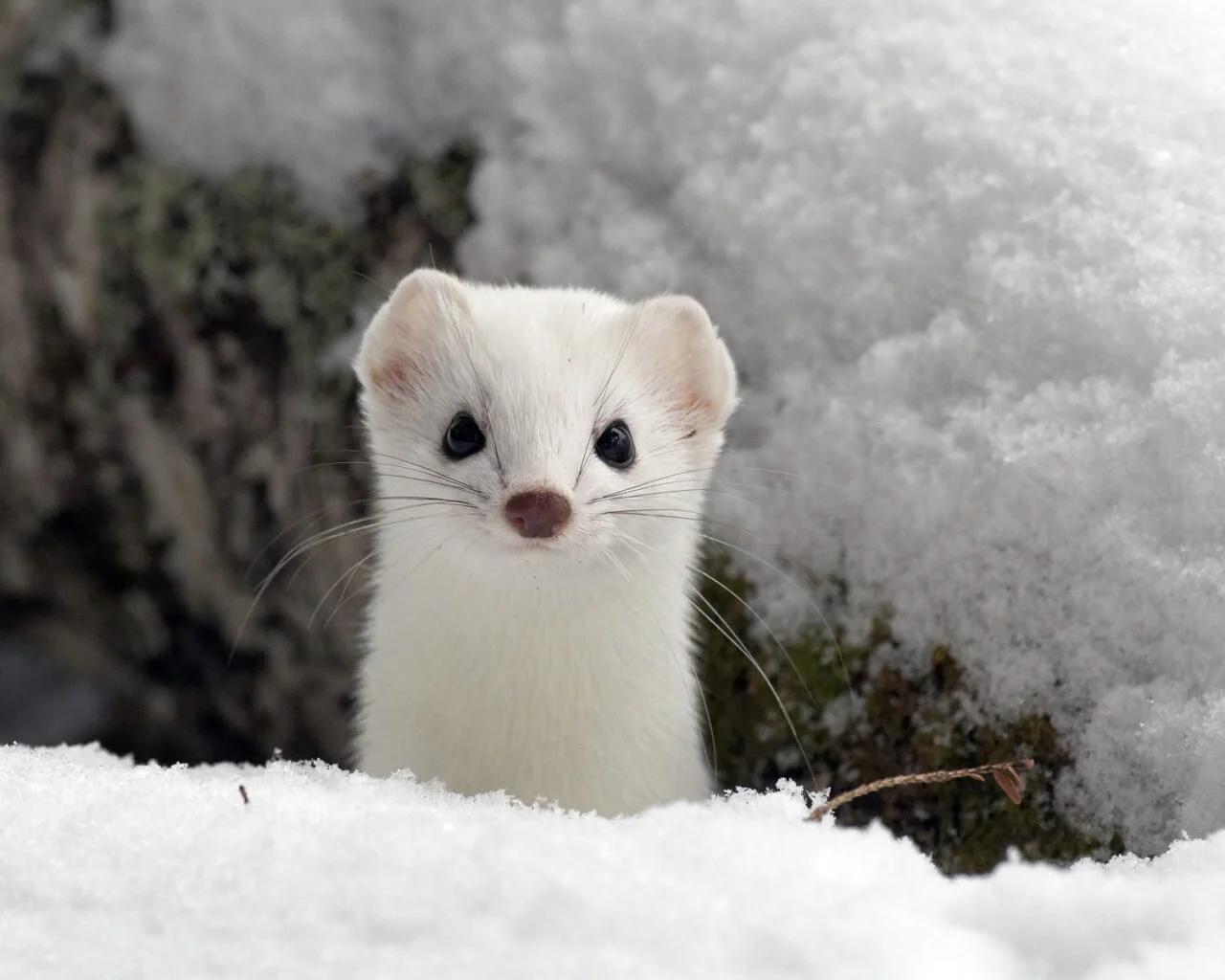The theme of this week’s Mental Health Awareness Week is nature. I celebrate this. First, because it raises awareness of the many benefits nature brings to our mental health. Secondly because nature is my passion, and the thing I turn to when my own metaphorical chips are down. And thirdly, because it gives me a just-about-legitimate reason to share my very best 30 seconds of 2021 to date.
To borrow from Marie Kondo, and as conveyed by my “narration”, this moment brought me pure joy.
Mute now if mild blasphemy bothers you.
This clip shows an ermine - a stoat in its white winter finery - gallivanting in the snow; carefree, capricious, and Covid-oblivious. Technically, this one is half-way through ditching its winter wardrobe. You can still see white patches along its flanks; these will have disappeared by now, leaving a white underside and brown body to better blend with the summer scenery.
But why am I sharing this, other than to bring joy to my fellow nature nerds?
Well, according to neurologist, psychiatrist and Holocaust survivor, Victor Frankl, ‘Between stimulus and response there is a space. In that space is our power to choose our response. In our response lies our growth and freedom’.
This sums up my ethos, in coaching and in life. The more we develop self-awareness, the more choice we have in our responses, which we can then adapt to create better outcomes. Some days I manage to choose, and others I don’t. I’m always curious to know what helps and what hinders. This day, I chose. So I am sharing my thoughts in case it helps one of you to do the same.
Recognising and silencing your inner critic
Despite the auspicious circumstances of this particular day (sunny, outdoor exercise with a friend, for goodness’ sake) I was defeatist and unappreciative. I felt tired and was struggling to enjoy it. Wrong kit. Too hot. Slushy snow.
I wasn’t choosing, I was passively allowing my griping inner critic to dominate: ‘You’re unfit, you’re useless, why bother?’ And then my ever-motivated friend suggested doing an extra section. She is used to my weasel-ways when it comes to dodging longer routes, and expertly steered me with a throw-away, ‘We might see something interesting.’
We slogged up a long hill, and then skidded down the other side, Bambi-like, barely upright. I paused to reset. I took off my jacket, wiped away the sun-cream-sweat stinging my eyes, and took a deep breath. I seized the space to respond and banished the negative voice, meaning I could savour the pleasure of calmness in nature instead. In that instant I moved from one belief to an alternative, and I just happened to be rewarded with an ermine dancing in the snow.
Why emotions may not be what we think they are
In the aftermath of ermine-euphoria, I realised that the morning already held everything that I most value: being active in nature; exploring and achieving; and sharing the moment with a close friend.
So why the lacklustre start?
Well, on this, I agree with neuroscientist and author, Lisa Feldman Barrett. It was because my brain is used to thinking in certain ways and predicting how and what I am likely to feel in response to certain circumstances. Emotion is therefore ‘our brain’s creation of what our bodily sensations mean, in relation to what is going on in the world around us’. I know that’s hardly romantic, but for me, it opens up a great opportunity of choice, which also accords with Frankl’s suggestion of a space between stimulus and response.
I was not irritated because of my tiredness, the heat, or the effort of physical activity. Instead, my brain, (ably assisted by a vocal inner critic), was making its own sense of the situation. It recognised the familiar physically challenging conditions; took note of the heat and some existing residual fatigue; and predicted and created familiar emotions for the moment - irritation and defeatism. By pausing, I managed to disrupt that reaction, which was just enough time to choose to feel something different.
Seizing the space
Knowing that I have choice is empowering. Of course it is a work in progress; I frequently feel negative or defeatist at the outset of a challenge. So I am trying to do more of what Feldman Barrett suggests, and think of my emotions as ‘a prescription to action’. And now and again that helps me to stop and choose a more helpful response.
So the next time something happens that leads to an unhelpful response, consider that it may be a prediction rather than consequence; how you are experiencing the world, rather than information about the world. Work out what you believe about the event that is creating your response. Then slow down, take off a metaphorical layer, and ask how you would prefer to think, feel and act.
I know that for many experiencing mental health issues, this approach may not be an option. But I do believe that each success, no matter how tiny, brings us one step closer to choice, growth and freedom. And who knows, if you are really lucky, you may even catch a glimpse of something ermine-like to slip into your pocket as a reminder for when you most need a flash of inspiration.
Choosing a track













